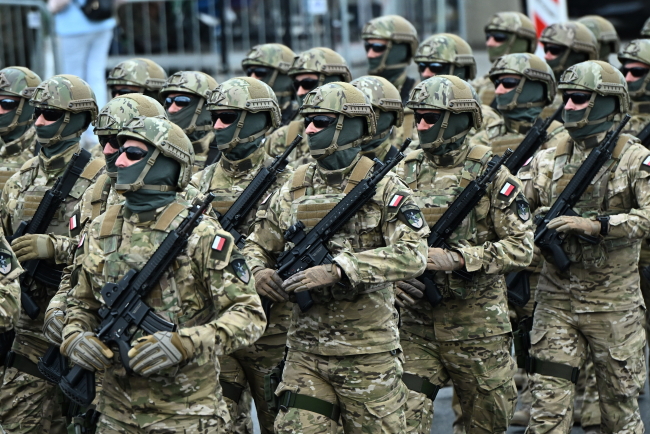Polish army copes with recruitment targets

Poland’s army struggles to enlist young people as most Central and East European nations have missed recruitment targets, the Reuters news agency has reported.

Dress rehearsal for the Polish Armed Forces Day parade in Warsaw August 11, 2024.Photo: PAP/Radek Pietruszka
For years, former Soviet-satellite states now in NATO have had difficulty maintaining troop levels, which has left army units understaffed and unable to reach combat readiness.
Now, with Russia’s invasion of Ukraine on eastern Europe’s fringes, a stark reminder of Moscow’s potential threat to the region has been looming again.
In Poland, government and military officials say they are hitting recruiting targets, planning to increase the recruitments limits, but critics question whether the goal to build an army comprising 300,000 soldiers is realistic, Reuters wrote.
But with unemployment rates low across eastern Europe, a major challenge is convincing young people to enlist for less money than they can earn in the private sector.
„We have challenges. They are related to the fact that the labour market here is very competitive,” Major General Karol Dymanowski, First Deputy Chief of the General Staff of Poland’s armed forces, told Reuters.
Eastern Europe’s biggest country is also seeking to boost defence spending to near 5% of GDP and recently launched a recruitment campaign dubbed “Holidays With the Army”, which provides basic military training for citizens aged 18 to 35 over 28 days.
But defence ministry data show that while the number of recruits rose in the latest available figures, a record 9,000 professional soldiers left the service last year.
While Dymanowski said it is a „natural process”, Colonel Bogdan Sowa, head of the Organization and Recruitment Directorate in Poland’s General Staff, explained there is a considerable group who leave the army just a few years after starting service.
“We are trying to prepare more attractive offers for them, creating new financial incentives,” said Sowa.
Countries across eastern Europe have struggled to sign up new soldiers and keep experienced ones in a region where Poland, Hungary, Romania and Slovakia all share a border with Ukraine.
The nations spent four decades under Soviet domination and have long warned about the threat from a more assertive Russia under President Vladimir Putin.
Western European countries in NATO face similar challenges. In July Reuters reported that NATO will need between 35 and 50 extra brigades to fully realise its new plans to defend against any attack on alliance territory from Russia.
(mo)
Source: Reuters



